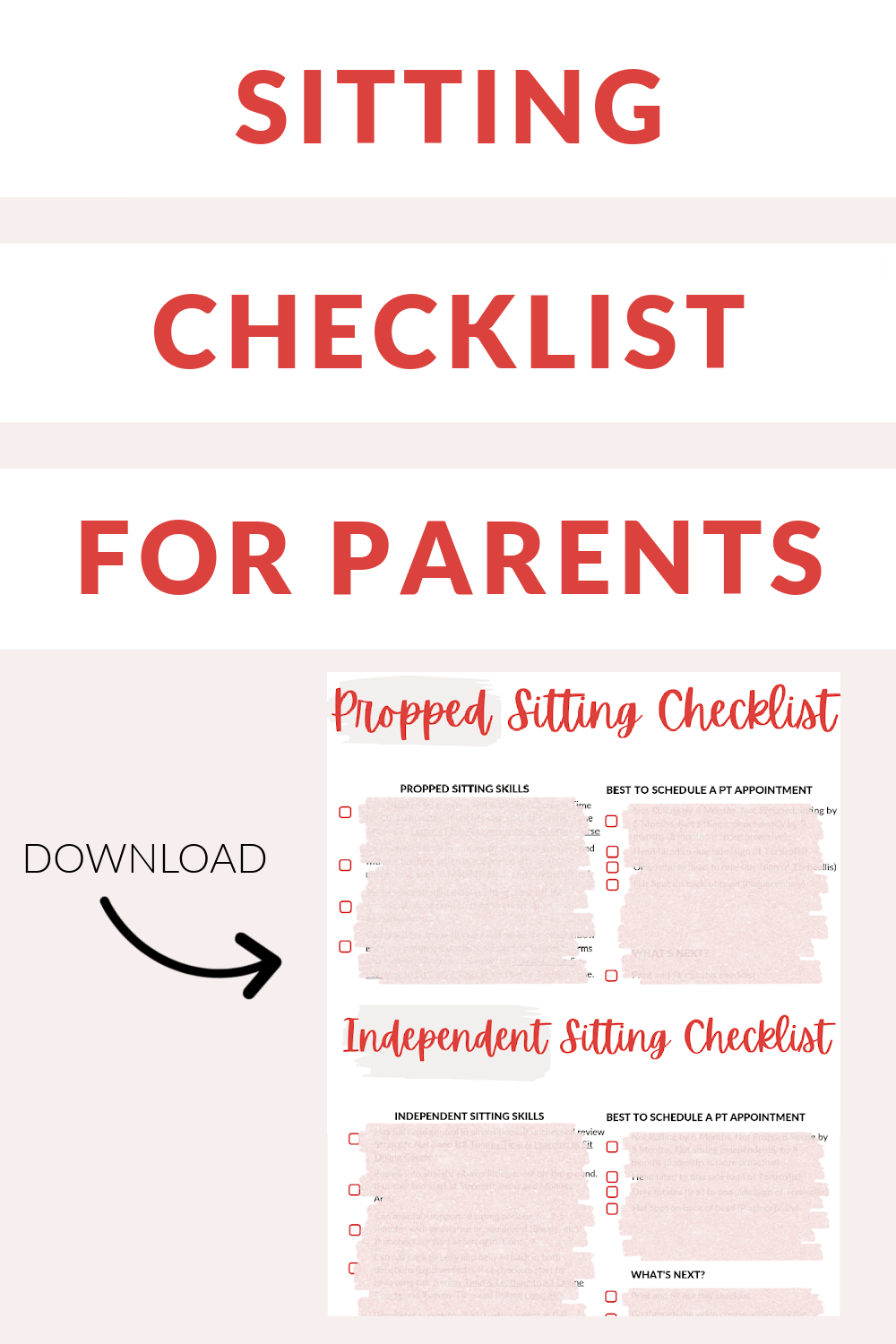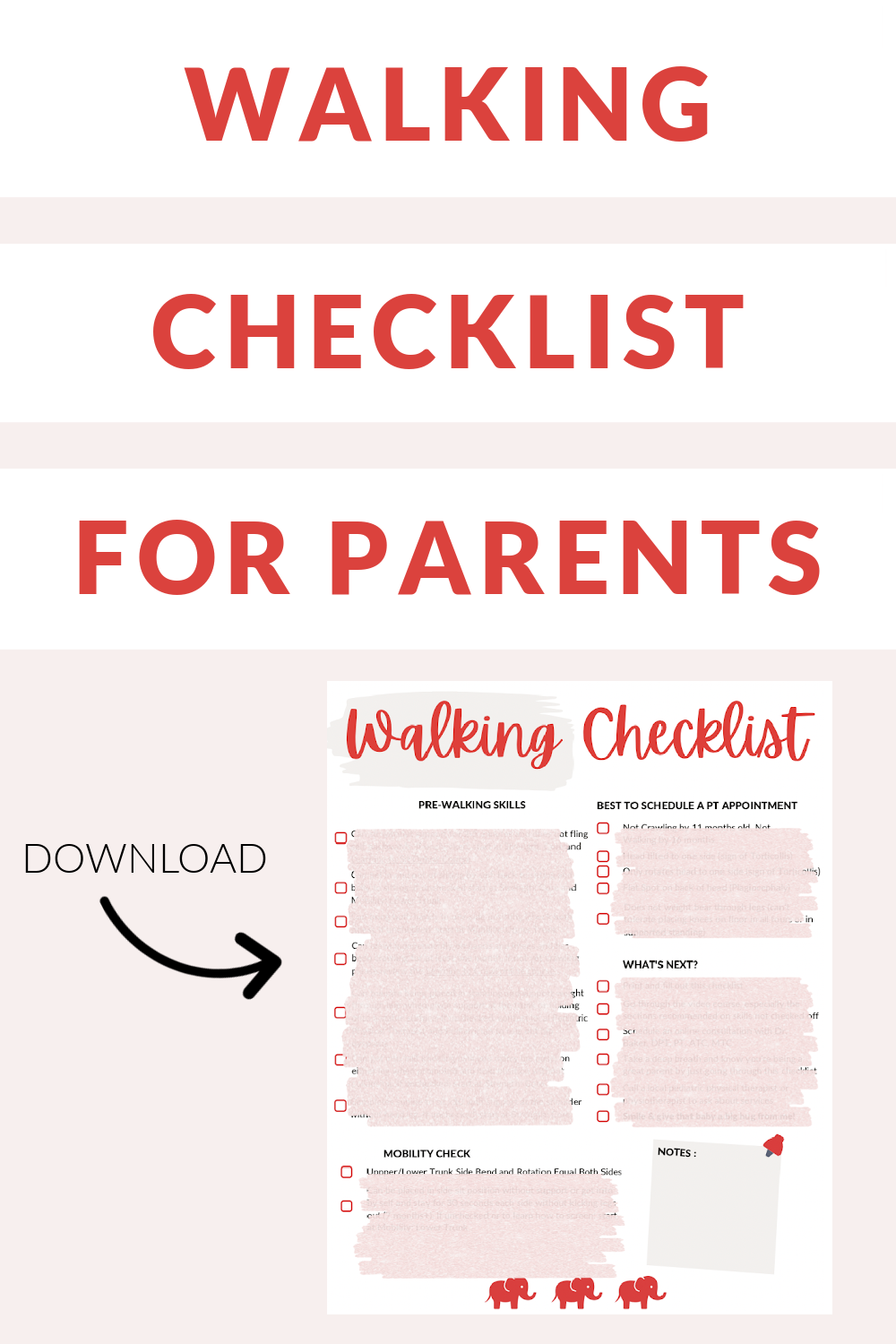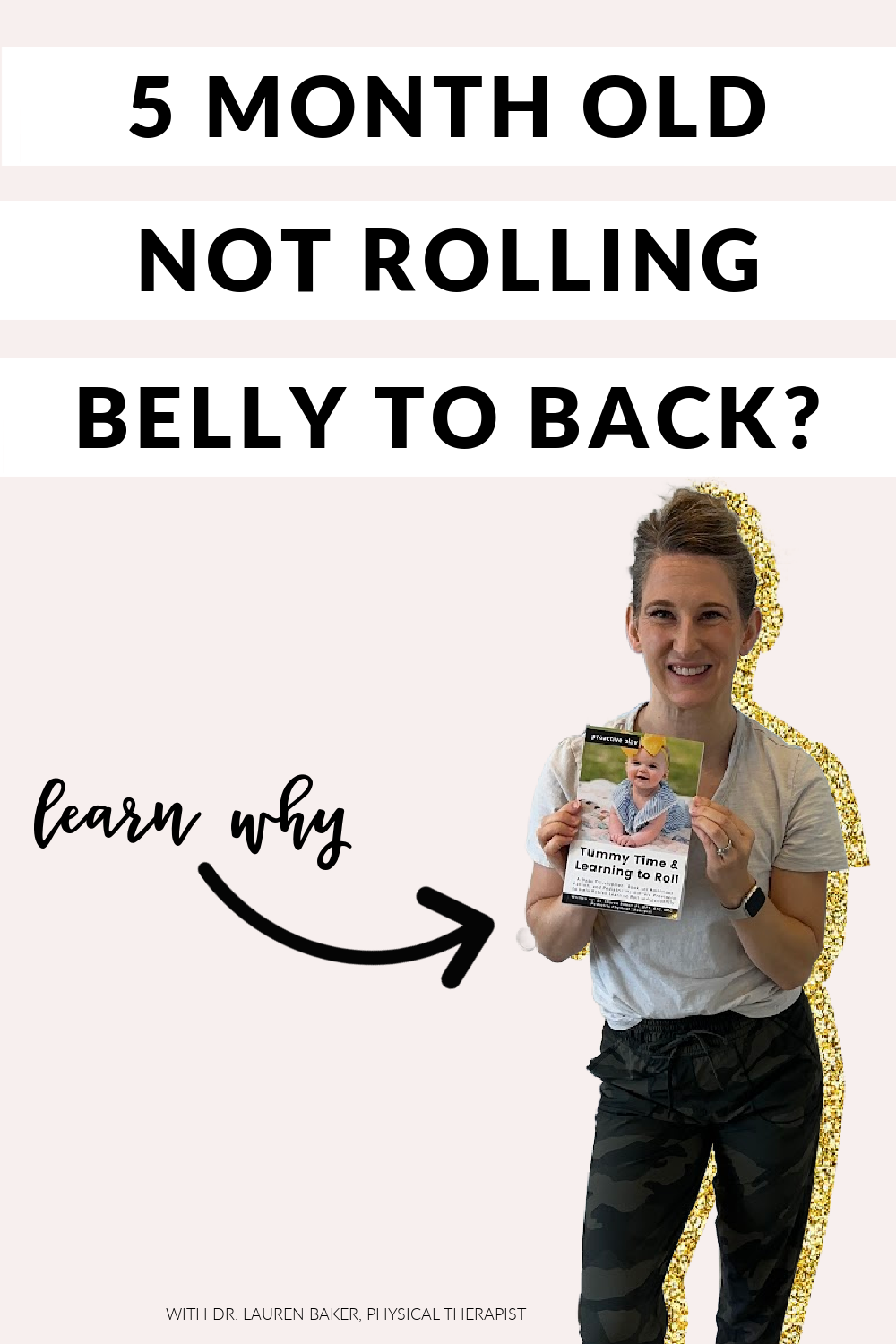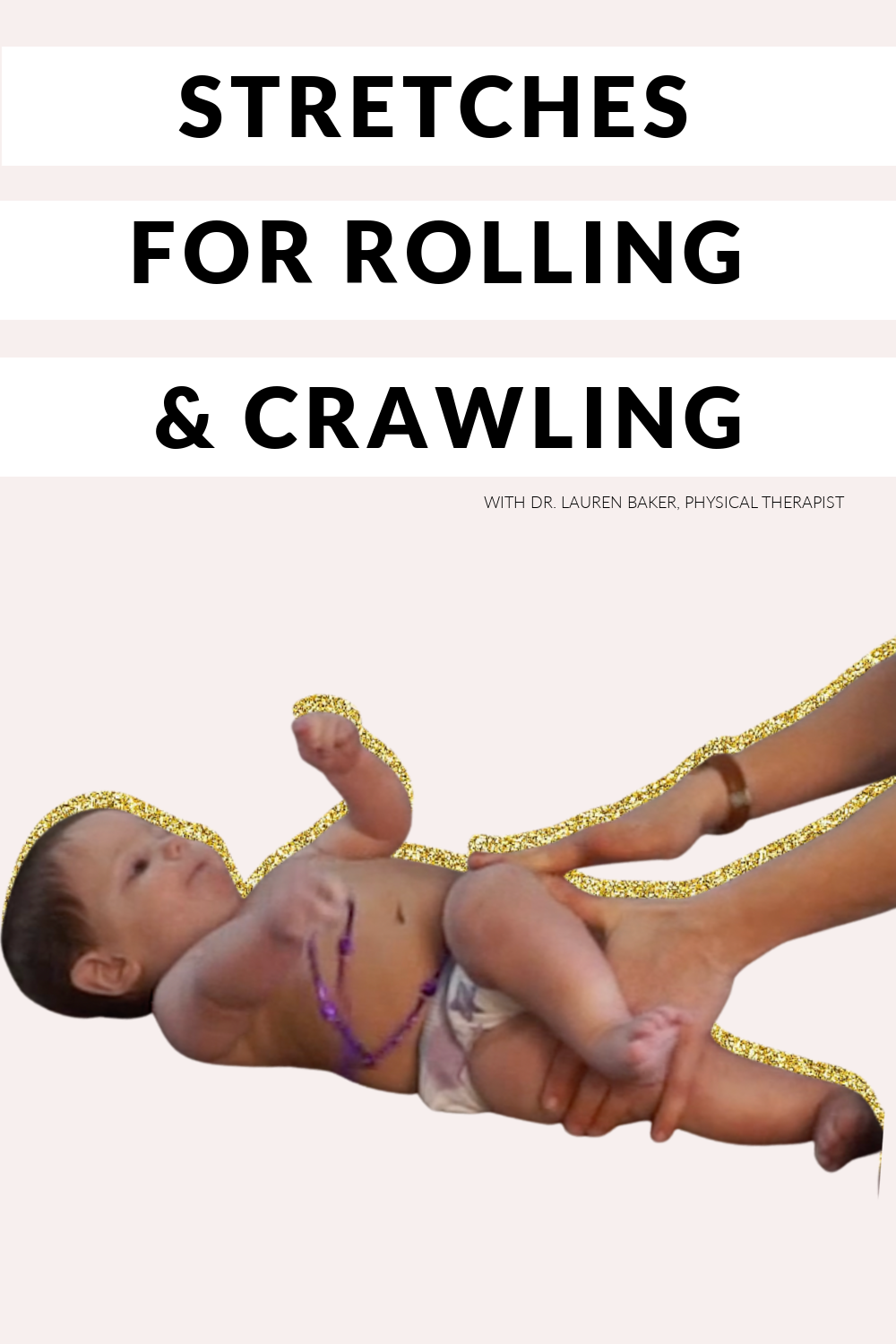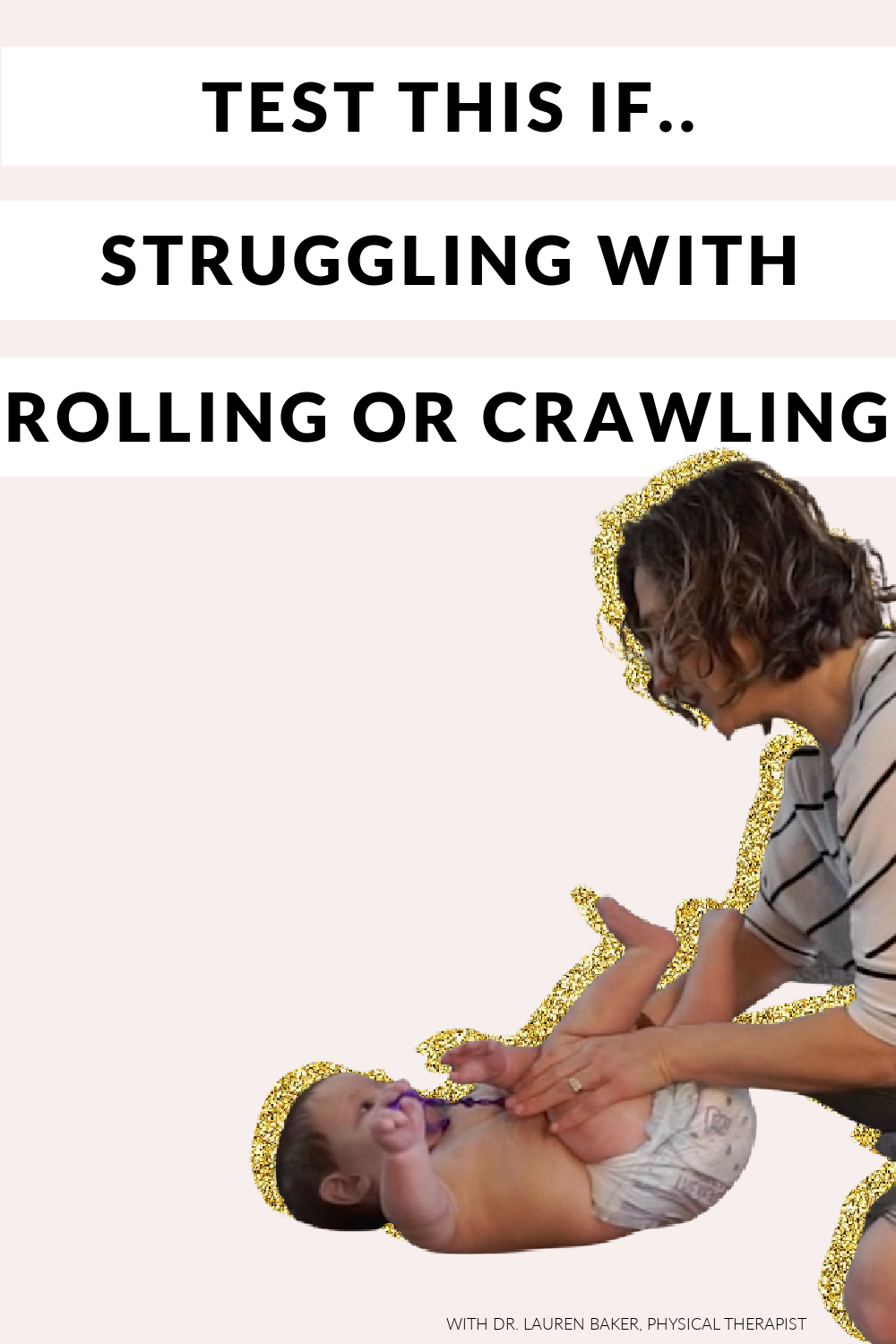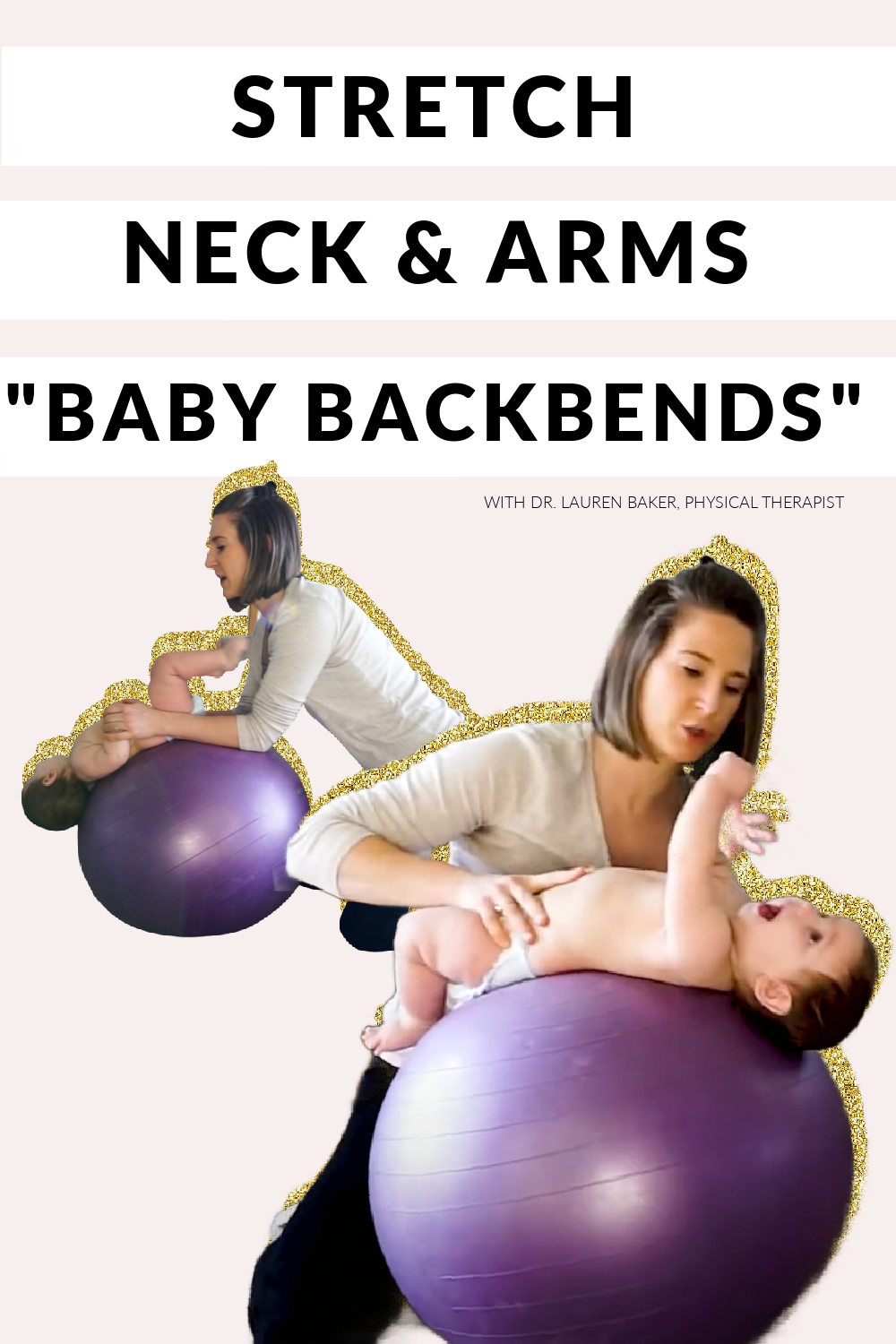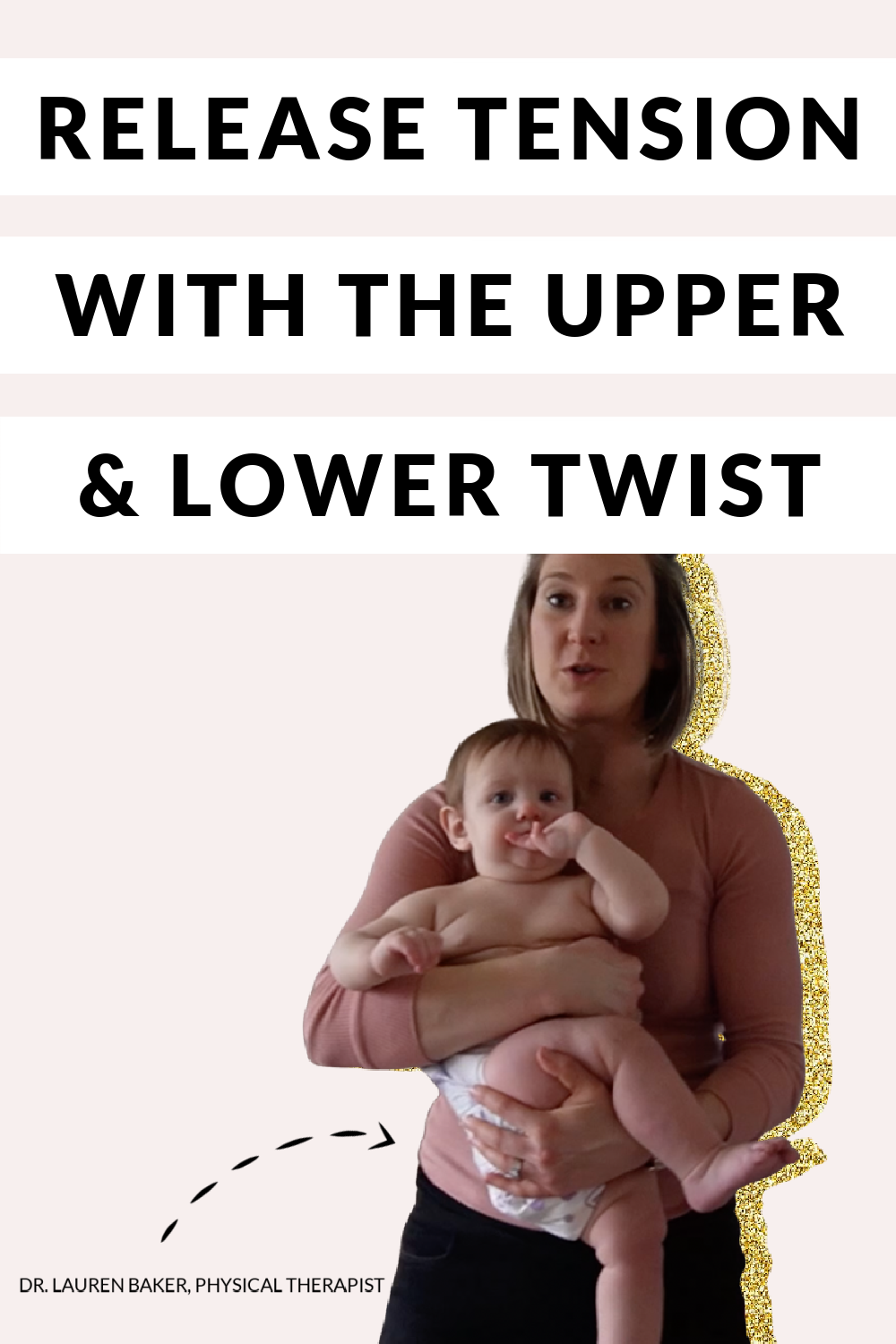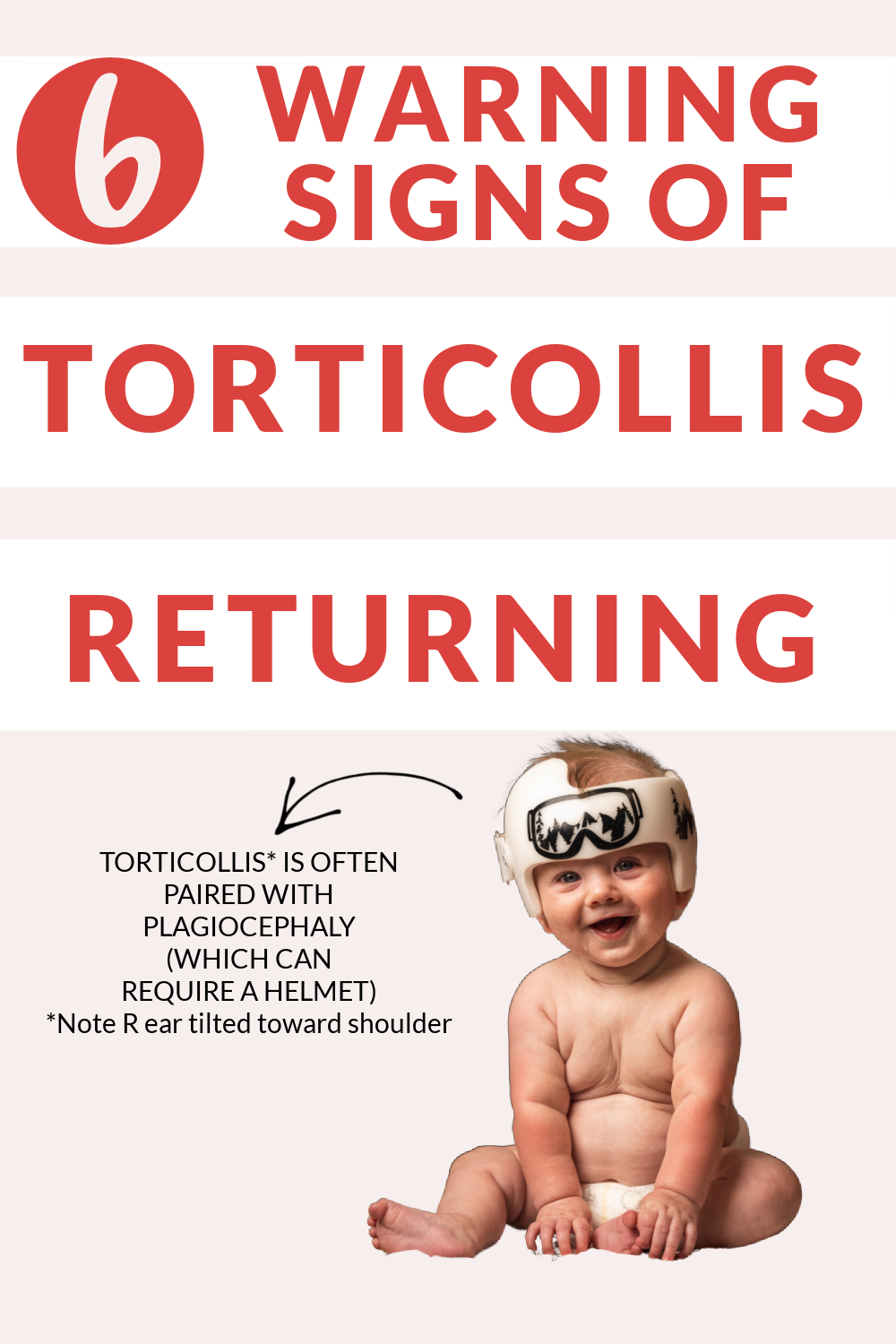Walking
this page contains affiliate links
Curious About Learning More on How To Teach Babies To Walk Without Support?
The absolute best resource for parents on helping their babies learn to walk with and without support is the free online course: Learning to Walk by Dr. Baker.
To gain immediate access to the online course, click the link above, submit your information, and the online course instructions will be emailed to you directly.
The free online video course is designed to help parents fully understand how to help their children walk with and without support and trouble shoot what building block of walking the child might not have mastered yet.
It comes with video examples of exercises, printable checklists to know exactly where your baby is at, and information on when to reach out for additional help.
This online course was created by Dr. Lauren Baker, PT, DPT, ATC, MTC, who is a Pediatric Physical Therapist in Boise, Idaho, trained in helping parents learn how to help their babies move and master their milestones.
She loves teaching parents how to see how their babies are moving as well as how to influence those movements though play positions and exercises to help babies move with confidence and ease.
It is meant to help ambitious parents understand baby development from 9-18 months (getting in/out of standing, cruising/walking with support to independent walking).
This online course breaks down each piece of movement in checklists so that parents know what their babies need for walking and it also covers a checklist to make sure babies have mastered crawling (otherwise, this could be a reason why walking is still a struggle!)
It also covers what areas might limit a child with walking, how to get in/out of standing, how to walk with and without support, and when to seek help from a pediatric PT.
This online course can help parents implement safe, strategic play-based exercises with their babies in 20 minutes per day.
A Great Resource For:
Parents and Pediatric Healthcare Providers of babies 9-18 months
Parents of babies who are struggling with getting in/out of standing or walking with/without support
Access to simple, easy-to-follow videos of play positions and exercises
Learning the four pillars of movement needed in order to master walking independently
8 Online Course Modules
Building Blocks of Walking
Walking Checklists + Shoe Guides
Getting Into Standing
Cruising and Walking With/Without Support
Strength Exercises
Mobility Exercises
Walking Specific Play Exercises
Next Steps: How to Prep for Jumping & Climbing
What If You Want Extra Help?
If you have concerns about your baby’s ability to pull into standing, cruise (walking while holding onto furniture), or walking independently without support, remember, you can always reach out to a pediatric physical therapist.
It's your right as a parent to advocate for your child's development. Sometimes, a few tips and tricks are all you need to get your baby moving better.
I’m here to support you and release those worries.
For those eager to learn more or seeking personalized guidance, I offer online video parent consultations internationally and Pediatric Physical Therapy in Boise, ID and the Treasure Valley – which you can learn more about by scheduling a free 20 minute chat with me (Idaho only) or an online parent consultation by clicking here.
I am dedicated to answering questions and providing tailored play activities for each unique developmental journey.
When Should A Child Receive Pediatric Physical Therapy?
Parents can call and schedule with a Pediatric Physical Therapist at any time, for any concern in all fifty states without a referral from their Pediatrician.
Pediatric Physical Therapy is medically indicated in all babies who are not walking on their own without support by 18 months. Proactive Pediatric Physical Therapy recommend if a child is not walking on their own by 16 months.
Pediatric Physical Therapy is medically indicated if you notice a flat spot on the back of an infants head (possible plagiocephaly), a tilt of their head consistently to one side (ear to shoulder - possible torticollis), or a rotation preference of their neck (consistently look only to the right or left - possible torticollis).
Flat spots can be due to in-utero positioning, rotational preference (right sided flatness most common) and babies are at an increased risk for flatness if they are male, were breech, multiple birth, premature, have difficulty with tummy time, or are in containers > 2 hr/day. Flat spots can only be treated up until 18 months and success decreases after the age of 12 months.
Jumping
Approximately 6 months after walking independently, children will begin showing signs of attempting to jump on their own.
Once a child is 2-2.5 years old, they are typically able to jump forward 4-23 inches.
If a child is 2.5 years old and have been walking for > 6 months and they are not yet showing signs of jumping (up, down, and forward), there may be strength, power, or coordination skills that they need help acquiring.
One of my favorite ways to work on building lower leg strength and endurance is the toddler squat which can be done supported or having them do it on their own.
What If You Want Extra Help?
If you have concerns about your child’s ability to jump up, down, or forward with/without support, remember, you can always reach out to a pediatric physical therapist.
It's your right as a parent to advocate for your child's development. Sometimes, a few tips and tricks are all you need to get your child moving and more confident in their coordination.
I’m here to support you and release those worries.
For those eager to learn more or seeking personalized guidance, I offer online video parent consultations internationally and Pediatric Physical Therapy in Boise, ID and the Treasure Valley – which you can learn more about by scheduling a free 20 minute chat with me (Idaho only) or an online parent consultation by clicking here.
When Should A Child Receive Pediatric Physical Therapy?
Parents can call and schedule with a Pediatric Physical Therapist at any time, for any concern in all fifty states without a referral from their Pediatrician.
Pediatric Physical Therapy is medically indicated in children who are showing significant signs of struggle with jumping at 2.5 years, are not jumping forward 4 inches by 3 years, not jumping down from a 12 inch height and landing with both feet at the same time by 3 years, or not jumping 1-2 inches off the ground by 3 years.
Stairs
Climbing skills begin as babies, when they crawl over objects on the floor and get on/off of elevated surfaces such as play equipment or a couch/chair.
Babies who skip crawling are at risk for having difficulty with climbing up and down stairs as they did not have the hip, leg, and core strengthening opportunities of their crawling peers.
Children who always lead with one foot when going up the stairs and with the other foot when going down stairs are potentially showing signs that one side of their body is stronger or more balanced than the other.
For example, if a child uses their right leg when going up the stairs and their left leg going down the stairs, their right leg is potentially stronger than their left leg. If they can do the opposite direction when prompted, there is less concern, but if they refuse or cannot without assistance, the left leg may be weaker than the right.
Children should be able to walk up stairs without holding on by 2.5 years (either with one foot or two feet on a step).
Typically, children should be able to walk up with either leg when prompted using one foot on each step by 3-3.75 years of age.
If a child is struggling with stepping up with one leg but not the other, try this activity to increase strength and confidence in the leg they tend to avoid using.
What If You Want Extra Help?
If you have concerns about your child’s ability to climb up or down stairs with/without support, remember, you can always reach out to a pediatric physical therapist.
It's your right as a parent to advocate for your child's development. Sometimes, a few tips and tricks are all you need to get your child moving and more confident in their coordination.
I’m here to support you and release those worries.
For those eager to learn more or seeking personalized guidance, I offer online video parent consultations internationally and Pediatric Physical Therapy in Boise, ID and the Treasure Valley – which you can learn more about by scheduling a free 20 minute chat with me (Idaho only) or an online parent consultation by clicking here.
When Should A Child Receive Pediatric Physical Therapy?
Parents can call and schedule with a Pediatric Physical Therapist at any time, for any concern in all fifty states without a referral from their Pediatrician.
Pediatric Physical Therapy is medically indicated in children who are showing significant signs of struggle with stairs at 2 years, are not going up/down stairs with support using both legs by 2.5 years (either with one foot or two feet on a step), not walking up stairs with one foot on each step without support by 3 years, or not walking down stairs with one foot on each step without support by 4 years of age.
Throwing & Catching
If a child is having difficulty with throwing/catching, it could be due to difficulty with coordinating their eyeballs!
When a ball comes toward a child, their eyeballs need to come together in order for them to accurately catch a ball.
If you notice a child closing their eyes as the ball comes toward them, they do not yet have the coordination of their eyeballs coming together, so they close their eyes instead.
This decreases their accuracy and often the ball will bounce off their chest or arms instead of them catching it.
try this activity with your child to train their eyeballs (kids love it! and you can even have them do it to you too!).
What If You Want Extra Help?
If you have concerns about your child’s ability to throw a ball overhand, underhand, or catch a ball, remember, you can always reach out to a pediatric physical therapist.
It's your right as a parent to advocate for your child's development. Sometimes, a few tips and tricks are all you need to get your child moving and more confident in their coordination.
I’m here to support you and release those worries.
For those eager to learn more or seeking personalized guidance, I offer online video parent consultations internationally and Pediatric Physical Therapy in Boise, ID and the Treasure Valley – which you can learn more about by scheduling a free 20 minute chat with me (Idaho only) or an online parent consultation by clicking here.
I am dedicated to answering questions and providing tailored play activities for each unique developmental journey.
When Should A Child Receive Pediatric Physical Therapy?
Parents can call and schedule with a Pediatric Physical Therapist at any time, for any concern in all fifty states without a referral from their Pediatrician.
Pediatric Physical Therapy is medically indicated in children who are not throwing/catching by 3-4 years old.
Crawling
this page contains affiliate links
Curious About Learning More on How To Teach Babies Crawl?
The absolute best resource for parents on helping their babies learn to crawl is the free online course: Learning to Crawl by Dr. Baker.
To gain immediate access to the online course, click the link above, submit your information, and the online course instructions will be emailed to you directly.
The free online video course is designed to help parents fully understand how to help their children crawl on hands and knees and trouble shoot what building block of crawling the child might not have mastered yet.
It comes with video examples of exercises, printable checklists to know exactly where your baby is at, and information on when to reach out for additional help.
This online course was created by Dr. Lauren Baker, PT, DPT, ATC, MTC, who is a Pediatric Physical Therapist in Boise, Idaho, trained in helping parents learn how to help their babies move and master their milestones.
She loves teaching parents how to see how their babies are moving as well as how to influence those movements though play positions and exercises to help babies move with confidence and ease.
It is meant to help ambitious parents understand baby development from 9-11 months (getting in/out of all fours to independent crawling).
This online course breaks down each piece of movement in checklists so that parents know what their babies need for crawling and it also covers a checklist to make sure babies have mastered rolling and sitting (otherwise, this could be a reason why sitting is still a struggle!)
It also covers what areas might limit a child with crawling, examples of disadvantageous ways babies might crawl, why hands/knees crawling is best, and when to seek help from a pediatric PT.
This online course can help parents implement safe, strategic play-based exercises with their babies in 20 minutes per day.
A Great Resource For:
Parents and Pediatric Healthcare Providers of babies 7-11 months
Parents of babies who are struggling with getting in/out of all fours or hands/knees crawling
Access to simple, easy-to-follow videos of play positions and exercises
Learning the four pillars of movement needed in order to master crawling
8 Online Course Modules
Building Blocks of Crawling
Crawling Checklists
Getting Into All Fours
Asymmetrical Crawling Patterns
Strength Exercises
Mobility Exercises
Crawling Specific Play Exercises
Next Steps: How to Prep for Walking
What If You Want Extra Help?
If you have concerns about your baby’s ability to tolerate an all fours position, have what they need to master crawling on hands/knees, or if they are not getting into all fours by themselves and are over 11 months, remember, you can always reach out to a pediatric physical therapist.
It's your right as a parent to advocate for your child's development. Sometimes, a few tips and tricks are all you need to get your baby moving better.
I’m here to support you and release those worries.
For those eager to learn more or seeking personalized guidance, I offer online video parent consultations internationally and Pediatric Physical Therapy in Boise, ID and the Treasure Valley – which you can learn more about by scheduling a free 20 minute chat with me (Idaho only) or an online parent consultation by clicking here.
I am dedicated to answering questions and providing tailored play activities for each unique developmental journey.
When Should Babies Receive Pediatric Physical Therapy?
Parents can call and schedule with a Pediatric Physical Therapist at any time, for any concern in all fifty states without a referral from their Pediatrician.
Pediatric Physical Therapy is medically indicated in all babies who are not crawling on hands/knees on their own by 11 months. Proactive Pediatric Physical Therapy recommend if a child is not crawling on their own by 10 months.
Pediatric Physical Therapy is medically indicated if you notice a flat spot on the back of an infants head (possible plagiocephaly), a tilt of their head consistently to one side (ear to shoulder - possible torticollis), or a rotation preference of their neck (consistently look only to the right or left - possible torticollis).
Flat spots can be due to in-utero positioning, rotational preference (right sided flatness most common) and babies are at an increased risk for flatness if they are male, were breech, multiple birth, premature, have difficulty with tummy time, or are in containers > 2 hr/day.
Sitting: with & without support
this page contains affiliate links
Curious About Learning More on How To Teach Babies To Sit On Their Own?
The absolute best resource for parents on helping their babies learn to sit is the free online course: Learning to Sit by Dr. Baker.
To gain immediate access to the online course, click the link above, submit your information, and the online course instructions will be emailed to you directly.
The free online video course is designed to help parents fully understand how to help their children sit independently and trouble shoot what building block of sitting the child might not have mastered yet.
It comes with video examples of exercises, printable checklists to know exactly where your baby is at, and information on when to reach out for additional help.
This online course was created by Dr. Lauren Baker, PT, DPT, ATC, MTC, who is a Pediatric Physical Therapist in Boise, Idaho, trained in helping parents learn how to help their babies move and master their milestones.
She loves teaching parents how to see how their babies are moving as well as how to influence those movements though play positions and exercises to help babies move with confidence and ease.
It is meant to help ambitious parents understand baby development from 4-9 months (propped to independent sitting).
This online course breaks down each piece of movement in checklists so that parents know what their babies need for sitting and it also covers a checklist to make sure babies have mastered rolling in all directions (otherwise, this could be a reason why sitting is still a struggle!)
It also covers what areas might limit a child with sitting, why it is so important, and when to seek help from a pediatric PT.
This online course can help parents implement safe, strategic play-based exercises with their babies in 20 minutes per day.
A Great Resource For:
Parents and Pediatric Healthcare Providers of babies 4-9 months
Parents of babies who are struggling with sitting with or without support
Access to simple, easy-to-follow videos of play positions and exercises
Learning the four pillars of movement needed in order to master sitting
8 Online Course Modules
Building Blocks of Sitting
Sitting Checklists
Propped Sitting/Sitting with Support
Independent Sitting
Strength Exercises
Mobility Exercises
Sitting Specific Play Exercises
Next Steps: How to Prep for Crawling
What If You Want Extra Help?
If you have concerns about your baby’s ability to tolerate a sitting position, have what they need to master sitting without support, or if they are not sitting by themselves and are over nine months, remember, you can always reach out to a pediatric physical therapist.
It's your right as a parent to advocate for your child's development. Sometimes, a few tips and tricks are all you need to get your baby moving better.
I’m here to support you and release those worries.
For those eager to learn more or seeking personalized guidance, I offer online video parent consultations internationally and Pediatric Physical Therapy in Boise, ID and the Treasure Valley – which you can learn more about by scheduling a free 20 minute chat with me (Idaho only) or an online parent consultation by clicking here.
I am dedicated to answering questions and providing tailored play activities for each unique developmental journey.
When Should Babies Receive Pediatric Physical Therapy?
Parents can call and schedule with a Pediatric Physical Therapist at any time, for any concern in all fifty states without a referral from their Pediatrician.
Pediatric Physical Therapy is medically indicated in all babies who are not sitting on their own, without support or their hands by nine months. Proactive Pediatric Physical Therapy recommend if a child is not sitting on their own by 8 months.
Pediatric Physical Therapy is medically indicated if you notice a flat spot on the back of an infants head (possible plagiocephaly), a tilt of their head consistently to one side (ear to shoulder - possible torticollis), or a rotation preference of their neck (consistently look only to the right or left - possible torticollis).
Flat spots can be due to in-utero positioning, rotational preference (right sided flatness most common) and babies are at an increased risk for flatness if they are male, were breech, multiple birth, premature, have difficulty with tummy time, or are in containers > 2 hr/day.
6 Warning Signs of Torticollis And What To Do If It Returns
Torticollis can resurface as a baby grows from an infant to pre-school age, due to the muscles growing faster than the bones. This blog post will cover torticollis warning signs from birth to 3 years old. The blog post is by Dr. Lauren Baker, PT, DPT, ATC, MTC a pediatric in home physical therapist in Boise, ID
Early treatment for Torticollis is necessary to decrease asymmetrical movement (one side moves different than the other, or better than the other) and in order to reach gross motor milestones, avoid complications such as positional plagiocephaly (flat head), and improve gross motor skills, which are essential to academic skills such as reading, writing, and coordination.
Torticollis can resurface as a child gets older, even after Physical Therapy direct services (1:1 with a child) have been stopped due to achievement of goals. It’s important for families to know the warning signs of a reoccurrence of torticollis. These warning signs of asymmetrical movement patterns can also be used as a guide to know when to call your PT if a child was seen for delayed milestones, tightness, or other concerns.
What is Torticollis?
Plagiocephaly is a medical diagnosis that describes a flattening of the skull of infants. There are three main types of plagiocephaly: plagiocephaly, brachiocephaly, and scaphocephaly.
Plagiocephaly is a flattening on one side of the head in the back, which became more common after the introduction of the back to sleep campaign (which has decreased infant SIDS, thank goodness) but unintentionally has increased skull flattening. Data tells us that 46% of babies will have a deformation of the skull at some point in their infant lives.
Brachiocephaly is a flattening of both sides of the back of the head resulting in an increased width of the skull. Scaphocephaly is least common with a long, narrow head shape.
Plagiocephaly is often associated with a diagnosis of torticollis (head tilting and limitations in neck rotation), the baby is often rotated toward the side that is flattened and limited in the opposite direction.
The American Physical Therapy Association recommends that healthcare providers and family members screen children for head/neck tilting and preference for one side rotation of the head/neck within 2 days of birth.
Physical Therapy evaluation and treatment are recommended for infants 2 weeks and older. Torticollis has optimal results when a child receives Physical Therapy prior to 2 months of age; however, can be treated at any age. Physical Therapy average treatment is 1.5 months at up to 2 months and up to 6+ months after six months of age.
Can Torticollis be associated with Plagiocephaly?
Yes. Plagiocephaly, or flattening of the skull (usually one side of the back of the skull), is associated with both Torticollis and inutero constraint or positioning. The first warning sign of torticollis is usually a head tilt or rotation preference (rotation to the right is most common in infants). When a child spends a majority of their time in rotation, the side they prefer is at higher risk of flattening due to the pressure of the mattress/ground on the head.
It is important to eliminate any head/neck rotation preference through Pediatric Physical Therapy consultations, direct service, Chiropractic care, or a combination of both services. Plagiocephaly is easier to treat conservatively earlier, specifically before the age of 3 months. After the age of 5-6 months, or a child begins to roll, if the plagiocephaly measures in the moderate to severe range, a helmet (cranial orthosis) is typically recommended.
Physical Therapy is still recommended when a child is referred for a helmet (cranial orthosis) due to higher success rates with combined therapy and the influence of the muscular pull on the bones/joints that can decrease the effectiveness of the helmet if not completed in combination.
Can Torticollis come back after my child has been discharged from Physical Therapy?
Torticollis is a full body musculoskeletal condition, which means that the neck, trunk, and pelvis are all connected and therefore all involved. A Physical Therapy treatment and plan of care should incorporate flexibility and mobility exercises or stretches to the whole body and not just the head/neck.
Without this, the head tilt or rotation preference may return quickly after discharge of Physical Therapy. If this occurs, request additional upper and lower trunk and pelvis evaluation in the following directions: upper trunk rotation to right and left, upper trunk side bend to right and left, lower trunk rotation to right and left, lower trunk side bend to right and left. If any direction is moderately to significantly limited, further treatment is recommended.
A highly effective form of full body torticollis treatment is called Total Motion Release (TMR). Dr. Lauren Baker, PT, DPT, ATC, MTC is level 1 TMR trained and can refer to other practitioners in your area if you are not in Idaho. She can additionally help screen your child online via an online parent consultation, which you can book here.
What if my baby has been discharged but not yet crawling?
For babies with a diagnosis of torticollis, I prefer to keep children on my caseload until they are progressing toward all fours (hands and knees) crawling. The reason for this, is that there are significant alternative crawling patterns that can present in a child with a history of torticollis.
If a child struggles with being on all fours (hands and knees) and is not yet rocking on all fours (the best precursor skill to crawling), there may still be significant trunk or pelvis limitations that are contributing.
Crawling is such an important gross motor skills because it sets a child up by strengthening their hips for walking, strengthening their hands for handwriting, alternate hand/leg coordination for reading and writing, and primitive reflex integration (SNTR specifically) which is important in copying words down from the board.
I find, as a Physical Therapist, it is essential to ensure that my babies are able to progress to this stage without complications as well as educate my mamas on what to look for if there is any gaps in service (due to no current concerns, scheduling conflicts, or budget concerns).
What should I look out for?
Asymmetrical Crawling
Army Crawling
After 4-6 weeks, army crawling should naturally progress to rocking back and forth on all fours. If a child is still army crawling (belly crawling) after 4-6 weeks, there could be some tightness or limitations in the upper or lower trunk or pelvis (or all three).
Army crawling is an example of sagittal plane movement, which is the same as moving the right and left sides of your body. It is an easier movement pattern than the front plane (moving side to side) or the transverse plane (rotating your trunk to the right or left).
Army crawling is a great precursor to hands and knees crawling, but it is not ideal for long term strengthening for hands, shoulders, elbows, hips, or progressing toward academic skills such as reading, writing, or copying down from the board.
Whenever possible, it is ideal to encourage hands and knees crawling with both hands on the ground, extended elbows, and both knees on the ground. If a child is not crawling on hands and knees by 11 months, direct Pediatric Physical Therapy services are recommended.
Hitch Crawl
A hitch crawl is a combination of all fours (hands and knees) but instead of both knees on the ground, one knee is off the ground and the foot is on the ground instead.
This position is more similiar and closer to hands and knees crawling, but is not quite there. What it typically means is that one hip or trunk is tighter, which is resulting in a compensation mechanism. When one foot is on the ground, that same side of the trunk is in a side bend (their shoulder is closer to their hip on that side), which could indicate that side of the trunk is tighter.
Additionally, the side of the foot that is on the ground is pulling both with the arm on that side, as well as the foot on that side. The mechanics of this movement are far different from pushing through the knees into the ground and shifting weight from side to side. It also uses the same side body parts (the arm of the foot on the ground pulls as does the foot on the ground) instead of the right arm and left leg working in conjunction and vice versa for the left arm and right leg.
A hitch crawl is often indicative of a combination of trunk/pelvis tightness and/or core/upper trunk weakness. The hitch crawl as the sole way of crawling is not ideal, and Pediatric Physical Therapy is recommended to enhance progress toward full hands and knees crawling as well as to decrease any future complications due to not having the gross motor experience of contralateral body movements (right hand/left leg), both knees on the ground for hip strengthening (decreases risk of falls or difficulty with stairs), and improved coordination (due to weight shifting instead of one sided pulling common with hitch crawl).
Booty Scooting
If I’m being honest, the booty scoot is my least favorite of the bunch. I will take a stubborn army crawler or a hitch crawl over a booty scoot any day of the week. That being said, if your child’s only form of movement is a booty scoot, don’t be scared — just know that it will likely take longer to transition to all fours crawling than the other asymmetrical crawling types.
The biggest reason that kiddos choose to booty scoot over other forms of crawling is that they do not like to be in tummy time or in supported all fours. If the kiddo hates tummy time and has not been able to learn how to tolerate being on their belly for up to 60 minutes per day, they have a higher risk of learning the booty scoot.A child who did not like rolling from belly to back or back to belly may also progress to booty scooting because rolling requires trunk rotation and moving the upper half of the trunk on a stabilized lower half of the trunk.
Booty scooting is also typical of kiddos with significant trunk rotation limitations in both the upper and lower trunks. Booty scooting is another sagittal plane movement (like walking or moving the right and left sides of your body, which is the easier plane). The difficulty with booty scooting is that you need trunk rotation in order to transition in/out of sitting, from lying on your back to sitting, and in order to have good hip strength.Booty scooting is a pulling motion, where a child uses both hands on the floor to pull their bottom forward. They often like this motion because they can do it fast, they are upright and can see their surroundings, and they simply prefer sitting to all other positions.
Booty scooting is not ideal because it does not allow a child to increase their core strength (being on all fours is a much better core strengthening position), push through the palms of their hand into the ground (strengthening their inner hand muscles for hand writing), coordinate their alternating sides of the body together (which is the same motor plan as reading and writing), and does not all for hip strengthening (which is needed for progression to walking and decreasing difficulty with stairs, running, or jumping).
If a child is showing signs of consistent asymmetrical crawling in hitch crawling or booty scooting and/or has been army crawling for greater than 6 weeks without progression to hands/knees rocking on all fours, please call your Pediatric Physical Therapist for exercises or additional appointments. If your child has not yet seen a Pediatric Physical Therapist, it is ideal to be proactive and call on your child’s behalf in order to obtain optimal movement strategies for your child.
Difficulty with one direction of side sit
Side Sitting is one of the best types of sitting for children 7 months and older. It is a great core-strengthening position, functional to progress to getting from sitting to crawling, and helps improve both trunk rotation and crossing midline while playing.
Sometimes, one hip is tighter than the other or one side of the trunk is tighter or weaker than the other, which can influence which side sit is more comfortable for a child. Ideally, while a child may prefer one direction to use for transfers, a parent will want to make sure the child practices both directions equally during strategic play times (at least 20 minutes/day).
If a child with a history of torticollis, shows significant preference to only one side of side sit and/or they do not tolerate one direction when placed in a side sitting position, that is a sign of hip, pelvic, or trunk tightness that if not resolved with previously taught stretches, would benefit from a consultation from the child’s previous Pediatric Physical Therapist or consultation with a new Peds PT.
For examples of side sitting and modifications, please watch this video.
Pulling to Stand with only one leg
When pulling to stand, a child will lead with one leg in a half kneel “will you marry. me,” pose. At the beginning, this pose will look quite messy and they may need some assistance bringing their knee closer to the surface they are pulling up on. Sometimes, babies will even try to pull themselves up solely by their arms and use the tops of their feet, which is normal at first, but looks quite icky to most of us!
As a baby continues to pull to stand, they should progress to using the half kneeling “will you marry me” pose, with assistance or independently. A child will likely have a preferred side, but a torticollis recurrence warning sign would be if a child only used one leg forward and when prompted (you put the opposite leg forward) they collapse or aren’t able to push through it to stand.
This would be indicative of weakness in the hip, pelvis, or lateral trunk (or all three). A family can choose to practice this position by holding it statically while playing on a higher surface, by going to both knees on the ground in tall kneeling (which strengthens both hips at the same time and is less strenuous on the trunk), or by encouraging the child to pull to stand with the non-preferred leg leading.
If a family notices that progress is slow, or a child refuses to push through the non-preferred limb, or collapses when being placed in the half-kneeling “will you marry me” pose, a Pediatric Physical Therapy consultation or evaluation may be beneficial.
Cruising only to one side
If a child is only cruising to one side after practicing cruising for 4 weeks, then there may be core, pelvic, or hip strength difficulties that are limiting that child. Cruising requires more lateral trunk and hip muscular strength than sitting does, so a child with an asymmetrical crawl or a history of torticollis may be experiencing a recurrence of symptoms that are limiting their progress in this skill.
Core strength to keep a child upright, while then shifting their weight to one hip/side in order to lift the other leg off the ground and then place it, followed by shifting the weight onto that new limb, and then doing it all over again, is actually a fairly complex process! For kiddos who have hip or core tightness, they may try to avoid any unnecessary effort by simply avoiding the difficult side (this isn’t ideal, of course!).
A family who practices cruising to the non-preferred side but is struggling to motivate the child or they just plop to their bottom instead of attempting to cruise to that side, may benefit from a Pediatric Physical Therapy consultation or evaluation.
Increased falls while walking after walking independently for 6 months
Kiddos fall a lot as they learn to walk. Falling in itself is not a bad thing, in fact, families can help their kiddos learn to walk simply by cheering when they fall down instead of showing fear. Kiddos naturally fall to their bottom and get back up and try again often falling over 17 times per hour, which is normal.
After six months, though, a child should be able to walk independently with much less falling. If you feel as though your child is falling more frequently than their peers, it may be due to a core/hip strength or mobility concern that is popping back up. Falling frequently does increase the risk of accidental self-injury but alone is a little bit of a tough area to differentiate between what is any okay number of falls (ages 1-4 years, frequent falls after age four is always a concern) and what is an age appropriate amount when “we’re learning about this gravity thing?”
The rule of thumb I give parents is that if your intuition tells you that your child is falling more than their peers, they likely are and could benefit from Physical Therapy. If your child is both falling more than their peers AND has one or more of the other signs and symptoms of asymmetrical movement or recurrence of torticollis, then you can confidently reach out for additional Physical Therapy support. The biggest one I’d see combined with falling is difficulty ascending/descending stairs. If a child is struggling with two areas, seeing a Pediatric Physical Therapist is recommended.
Difficulty with Climbing or Descending stairs
Stairs are super difficult. Let us first talk about at what ages should children be able to do stairs, because there is a systematic way of progressing to walking up/down stairs on your own.
18-22 months: walk up/down stairs while holding your hand and/or a railing/wall
24 months: walk up/down two steps independently while holding onto a wall/railing (not your hand)
30 months: walk up stairs using one foot on each step (R foot then L foot then R foot, with one foot on each step) with/without holding onto the wall/railing
Typically, if a child has difficulty (weakness or difficulty with balance) with one limb they are going to go up the stairs with the opposite limb with two feet at a time (R is stronger, R goes up the stair then L meets it on the stair, R goes up the next stair). If a child struggles with either balance or strength or both, they may insist on holding a parents hand, which after 24 months of age is not ideal. To help a child progress to independent stair climbing, a parent can support the child at the hips instead of holding their hand, walk behind them as the child goes up the stairs, and walk facing them but below them when going down the stairs.
When descending stairs, if a child has weakness or difficulty with balance, we often see them ask to be carried down the stairs, scoot on their bottom down the stairs, or refuse to walk down the stairs by becoming upset because it is too difficult. Walking down the stairs, children typically lead with the leg that is weakest. For example, if the R leg is strong and the L leg is weak, the child with go up the stairs with the R, but go down the stairs leading with the L (in both directions, the R leg does all the work).
If a child refuses to switch limbs or uses only one limb when prompted by an adult when descending stairs, even when the adult switches sides (uses the railing going down and uses the wall on the opposite side going down), there is likely an imbalance in one limb/side of the trunk, which could benefit from PT.
How can I have my baby or child work with Dr. Lauren?
If you would like Dr. Baker to come to your home to evaluate your baby (2 weeks+) or toddler you can schedule an evaluation online. Evaluations are 60 minutes in person in the Treasure Valley and Boise area. For pricing considerations please visit our pricing page. If your baby/toddler is not in Idaho, you may schedule an online parent consultation, where Dr. Baker, DPT, will answer any questions you may have and/or screen your child if appropriate.







